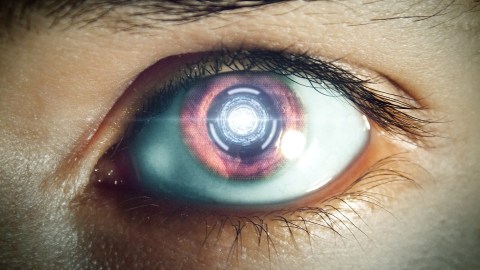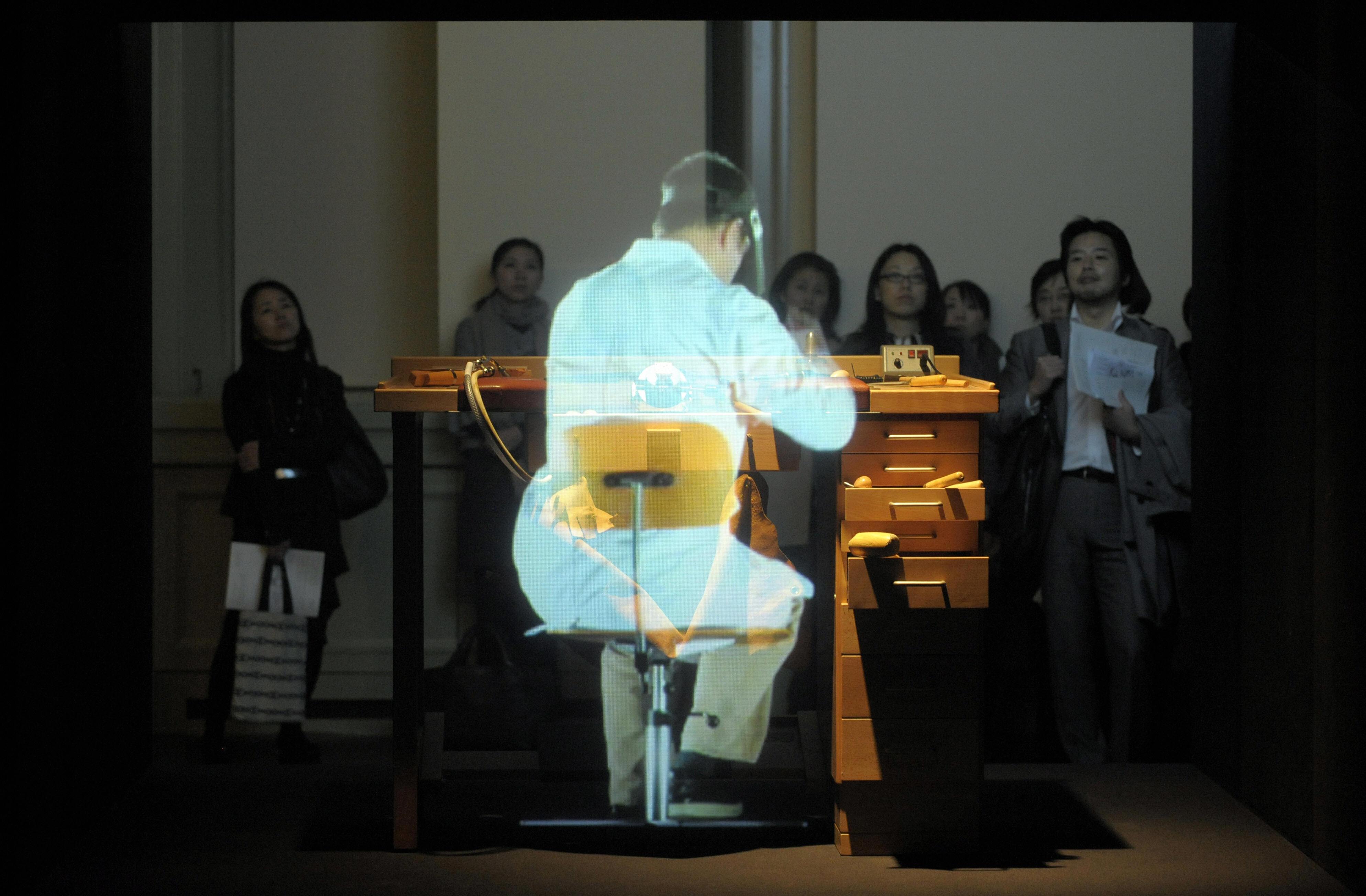10 Human Body Modifications You Can Expect in the Next Decade

Elon Musk has called it: you’re already a cyborg. Your smartphone enhances your mind, your spectacles enhance your vision, and your pacemaker (if you have one) regulates your heartbeat. Our environment is increasingly wired, sensor-filled, and digitally connected—and so are we! This trend will only continue.
All over the world biohackers, scientists, entrepreneurs and corporations are eagerly pursuing new and marketable applications for advanced technologies. Many of them are being actively designed to help humans fulfill our age-old transcendent longings—to be stronger, smarter, better-looking and more resilient, and to cultivate new abilities that seem like superpowers by the standards of the past.
Here are 10 emerging devices and technologies that could soon enhance you in body and mind.
1. RFID Chips
Microchips are not new, but the practice of routinely implanting them in humans is. Already, biohackers are enthusiastically getting chipped, many of them undergoing the DIY surgery in tattoo parlors. With small radio frequency identification (RFID) chips implanted in their hands or wrists these citizen cyborgs can already eliminate many tedious rituals from their daily lives, like carrying a wallet or keys.
I Got a Chip Implanted in a Biohacking Garage
www.youtube.comThe chip can be used to make tap-and-go payments and can be programmed to open a home or office door electronically. No more carrying keys down to the beach when going for a swim, and no more jogging with them jangling in your pocket. One Australian biohacker, Meow-Ludo Meow Meow also thinks that chip implants could replace public transport cards.
But that’s just the basics. Chipping could soon be used on a national scale for identification and security. Hacking and identity theft will certainly be a concern, but on the plus side there’ll be no more anxiety about losing your passport when you travel! Transhumanist candidate for Governor of California Zoltan Istvan has a chip in his wrist to open his front door. The chips can also be used in the workplace. One Swedish office complex Epicenter has already made chipping a voluntary identification option for tenants and their employees. The Belgian digital marketing firm NewFusion also began offering implants to staff in 2017.

With electronic medical records becoming more pervasive, personal medical data could also be stored on implanted RFID chips. If you arrive in the emergency room and need a blood transfusion you can immediately be scanned for your blood type. Allergic to certain medications? The ER doctors will know this too, as well as who has medical power of attorney, whether or not you’re an organ donor, and what your end of life wishes are (e.g. if you have a DNR-“do not resuscitate” order).
2. Exoskeletons

Hyundai’s “Iron Man” robotic exoskeleton in action. Image credit: Hyundai/Business Insider
The Terminator was “a cybernetic organism. Living tissue over a metal endoskeleton.” But that was in 1984 and the concept was fictional. Jump ahead to the 2020s and you could be a different kind of cyborg—one that wears a metal exoskeleton over your biological meat sack.
Why would you? If you’re in the military, particularly in combat, an exoskeleton can dramatically enhance your strength and endurance and allow you to carry more supplies when moving on foot.

Image credit: A Cuadra/Science
If you’re just a regular human then carrying supplies is probably not a big concern. But back pain likely is. Sure, an exoskeleton may not help an office worker much, but it could be a big help to factory workers and manual laborers. In the near future, before the impending robot job-apocalypse, exoskeletons could help laborers to use the correct muscles when lifting and allow them to lift more weight safely.
More profoundly, if you suffer from spinal cord injuries an exoskeleton could help you to walk again. Elderly people with mobility issues could also benefit from the technology.
Robotic Exoskeleton Helps Paralyzed Man Race Marathons | Freethink Superhuman
youtu.beThe transhumanist politician Zoltan Istvan also thinks that exoskeletons could soon transform sport and other forms of recreation by helping us to reach new physical peaks and compete at a different level. He even thinks we’ll use them in the bedroom, though it’s contentious whether humans will really want to ‘suit up’ as a preamble to getting down and dirty.
3. Real-time Language Translation

Real time language translation applications have been around for a few years though they’ve had their share of quirks and imperfections. However, recent advances in machine learning have done a lot to improve machine translation of late—so much so that we are now on the cusp of achieving seamless translation in real time. In late 2016 The New York Times reported that Google’s translation “A.I. system had demonstrated overnight improvements roughly equal to the total gains the old one had accrued over its entire lifetime.”
With artificial intelligence facilitating a whole new level of precision in this field, a wave of companies are racing to bring even better products to the market, including Microsoft and Google. The US startup Waverly Labs has crowdsourced over $4 million and has pre-sold 22,000 prototype earbuds that will translate in real time while canceling ambient noise. At $299 a pair, you have to wonder whether human translators will be able to earn much of a living from here on out.
4. Augmented Vision

Bionic eyes are a thing! They are currently used to treat hereditary and age-related macular degeneration (AMD) and rely on a camera mounted on glasses feeding inputs to electrodes attached to the retina. This technique is a remarkable, though still imperfect, means of reversing a form of blindness.
Another kind of intraocular bionic lens is being developed by the Ocumetics Technology Corp and is currently being tested in clinical trials. The aim of the product is to restore “clear vision at all distances, without glasses or contact lenses” regardless of the age of the patient. Ideally, “three times better than 20/20 vision” could be achieved and laser eye surgery could eventually be rendered obsolete.
Perfect vision and no glasses would be a massive improvement for many. But why stop there? Theoretical physicist Michio Kaku thinks we should aim for superhuman vision and maintains that we are already well on our way.
Telescopic contact lenses have already been developed, which can enable the user to zoom in and out with a wink. The technology was developed by the US Defense Advanced Research Projects Agency (DARPA) and could soon be marketed to sufferers of AMD. But as the technology improves and gets cheaper it could eventually become the norm to have telescopic vision, as well as other add-ons like night vision.
5. Smart Contact Lenses

Patent diagrams for Samsung’s smart contact lenses. Image credit: Samsung/Korea Intellectual Property Right Service (KIPRIS)
But wait, the eye stuff gets even cooler! Both Sony and Samsung have patented smart contact lens technology that can record video by blinking. The augmented reality company Magic Leap is also working on a smart contact lens, in tandem with its much anticipated new augmented reality headset. Both products will be able to overlay computer generated images onto the real world.
But augmented reality tech isn’t just for fun. Another application of smart contact lenses being developed at the X lab (formerly Google X) is the capability to detect blood glucose levels in tears and alert diabetics when their blood sugar is too low.
How could this change your life in the next decade? Leading transhumanists and tech gurus Peter Diamandis and Kevin Kelly think that in the near future these kinds of innovations will hail the end of PCs, smartphones and screens-as-we-know-them. Soon you could walk around with the equivalent of your smartphone inside you, while the screen could be both everywhere and nowhere. Classic miniaturization and dematerialization in action!
6. 3D Printed Body Parts

Lab-grown bladders and functional vaginas have already been successfully implanted in patients. But even more exciting is the promise of 3D printing and implanting vital organs like hearts, lungs and kidneys.
Professor Martin Birchall, a surgeon at University College London, believes that this will come and that important stepping stones will arrive very soon. He told the BBC in 2016:
“I think it will be less than a decade before surgeons like me are trialling customized printed organs and tissues. I can’t wait!”
The Economist is even more optimistic, predicting that the first implantable livers and kidneys could be 3D printed as early as 2023.
7. Smarter Drugs

Let’s be honest, humans love drugs. Some age-old faves include alcohol, caffeine and sugar. But when it comes to both medicinal treatment and recreational or performance-enhancing drugs (think Prozac for depression and anxiety, or caffeine and amphetamines for alertness and concentration) today’s drugs are pretty darn primitive. Why? Because they’re a one-size-fits-all solution that can’t be well tailored to the individual. Benefits are also very hard to decouple from side effects.
The good news is that soon we could have a new generation of better, smarter drugs. Already, artificial intelligence and cheap genomic sequencing are accelerating the drug discovery process and facilitating an increase in effective personalized medicine. Unsurprisingly, pharmaceutical companies, governments and tech corporations are eagerly getting in on this medical big data game.
The Human Longevity Inc., which was run until early 2017 by the pioneering geneticist Craig Venter (of Human Genome Project fame) is on track to complete an ambitious plan to sequence 1 million human genomes by 2020. The company hopes to mine this enormous database of genetic, and phenotypic (lifestyle) data and rapidly accelerate the innovation of personalized drugs and treatment plans.
Personalized cancer treatments are already increasingly common and effective. Soon, as former US President Bill Clinton once said, we could “know the term cancer only as a constellation of stars.”
8. Brain-computer Interfaces

Humans can already control wheelchairs, advanced neuroprosthetic limbs and drones with their minds. Brain-computer interfaces (BCI) have also been used to communicate with patients suffering from the rare affliction of locked-in syndrome. Soon we could be using technology like this all the time, not just to correct for disabilities, but to enhance communication and sensory connection. Perhaps we could even connect telepathically?
Mark Zuckerberg certainly thinks so. He famously proclaimed in 2015 that in the future (though more than a decade away):
“You’re going to just be able to capture a thought, what you’re thinking or feeling in kind of its ideal and perfect form in your head, and be able to share that with the world in a format where they can get that.”
Zuckerberg is not the only tech kingpin thinking about this stuff. In 2016 Elon Musk famously spruiked the idea of a “neural lace,” effectively an advanced BCI in which biological brains seamlessly mesh with non-biological computing. Rumblings on Twitter and hints from Musk himself suggest he is actually planning to work on his own lace design.
The leaders of Stanford University’s NeuroTechnology Initiative also believe that in years to come “brain-machine interfaces will transform medicine, technology and society” and that “future devices will likely not only restore, but also augment, human capacities.”
9. Designer Babies

In 2016 the first 3-parent baby was born. The nucleus from one of the mother’s eggs was transplanted into a donor egg with the nucleus removed. The donor egg was then fertilized with the father’s sperm, a process undertaken to avoid a fatal condition called Leigh syndrome, which is carried in the mother’s mitochondrial DNA.
With gene editing becoming a more precise science, thanks to new techniques like CRISPR-Cas9, it will not be long before they are utilized en masse to prevent most heritable diseases. Why would you roll the genetic dice when you could actively intervene to ensure that your child will be healthy? Especially if you’ve had your genome sequenced and know you are a carrier of deleterious genes, like the BRCA1 and BRCA2 mutations, which strongly predispose those with the mutations to breast and ovarian cancer.
Pre-natal screening already affects the proportion of certain genetic traits in the population—a high percentage (most recently estimated at 67%) of fetuses identified as having Down syndrome are aborted. While statistics like this have sparked widespread ethical debates, they also indicate that humans tend to be willing to make use of technologies that give them more choice over their reproductive outcomes. IVF is another obvious example.
Beware the Frankenbabies! | Freethink Wrong
youtu.beThe ultimate potential of gene-editing technology is profound and could be species changing. It’s uncertain how far we’ll progress (or indeed allow the technology to progress) in the next few years. But you’ll definitely see movement in this space over the next decade.
10. Enhanced Sexual Organs

Photo: Jean-Paul Goode, Paper Magazine
Almost 300,000 Americans underwent breast augmentation surgery in 2016, a 4% increase on the previous year and a 37% increase since 2000. But it’s not just boobs, almost all cosmetic procedures are on the rise. Clearly Americans have embraced this mode of human enhancement with gusto.
But who wouldn’t want to achieve the same goals without sticking bags of silicon inside their body? There might just be a better way.
Transgender transhumanist Valkyrie Ice McGill predicted in 2014 that by 2024 a total functional gender transformation will be possible. The same technology that could enable a complete gender reassignment could also allow patients to achieve breast, buttock, and penis enlargements with more natural results. She stated:
“A decade from now, a plastic surgeon is likely to use body modeling software developed by MMOs and VR to enable you to decide precisely how you want to look, and then supervise the da Vinci autosurgeon as it uses your own body fat and skin cells to produce a stock of programmable stem cells, and then performs hundreds or even thousands of minimally invasive microsurgeries to place those programmed cells throughout your body, where they will become extra muscle mass, larger breasts, repair damaged internal organs, etc., allowing your future self the option of “resculpting” your personal appearance.”
Holy crap! A bigger butt grown from your own stem cells. Kinda cool, if a little predictable. But then we idealize curvy women and muscular men because it’s been an historical ideal with a strong biological impetus. Our tastes don’t spring from nowhere.
Yet when it comes to sex, humanity as a species has big aspirations and vivid imaginations. There will always be those who want to create completely new ideals of beauty and sexuality and who hope to transcend the limits and values of the present day.
The transhumanist George Dvorsky is one such human. He has playfully outlined out a speculative ideal for “the penis of the future.” Notably, it’s not the same old thing but bigger. Among other traits, Dvorsky hopes that a future penis could be bacteria resistant and WiFi enabled. Another eager biohacker and transhumanist Rich Lee has a different vision. He thinks vibrating penis implants will be the way of the future.
Some other fascinating predictions can be found in the 2016 Future of Sex report. The authors believe that dating in virtual reality will be common by 2022, and that by 2027 we’ll have brain interfaces that allow us to literally turn on our partners via their most powerful sexual organ: their mind.

Infographic from the 2016 Future of Sex report. Image credit: futureofsex.net
While the fullest realization of many of these technologies will likely be felt over several decades, it is realistic to imagine we will see these kinds of innovations improving fast and becoming more widely tested and adopted in the decade to come. Sure, you might not have a vibrating penis in 10 years time, but you will certainly have met someone with a chip implant by 2027 and there’s a very good chance you’ll have one yourself. The same goes for much of the rest. Very exciting stuff!
—





